Gaming The Data To Make Better Games
Data is vital for understanding your users and building products that they’ll love. The most successful organizations and people are data-driven. They’ve figured out a way to leverage data to drive their business and user engagement up. More than that, they’ve done it by creating and adding features to a product or service their users need. For instance, Spotify uses big data to understand the digital music taste of users, developing personalized content for them, and enhancing marketing through targeted ads, Spotify wrapped, and so on. This report from Harvard Business Review shows how data-driven companies use big data to get insights to do things that not only improve their bottom line but also make their customers happy.
Gaming is an industry where this holds just as true. Using data carefully can help you make a game which sells well. It also creates an amazing user experience for your customers and will keep them coming back for future releases. Building a data-driven culture can take your games to a whole new level.
Let’s take No Man’s Sky as an example of how they went from a rocky launch to a beloved game using gaming data from reviews as well as by looking at how players behaved in game. When No Man’s Sky was announced, its developers wanted to make a game which let players explore a vast, procedurally-generated science fiction universe. The game was developed over three years by a small team at Hello Games and was seen as an ambitious project. The game garnered a lot of attention once announced and the developers made a lot of promises for features such as a multiplayer game mode, cool in-game vehicles, and more. The excitement was almost at a fever pitch as the game’s release date got pushed. Once released, the game proved to be a commercial success initially thanks to pre-orders but the reviews were damning, stalling sales. This was a result of the promised features not being in-game, as well as lack-luster gameplay.
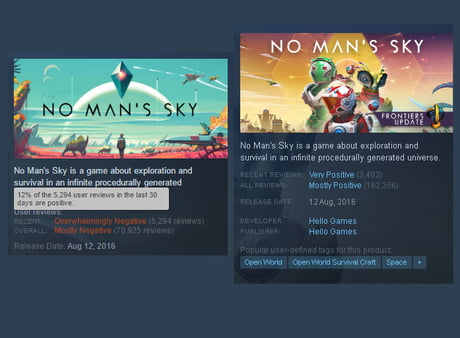
The developers however listened to their users’ opinions and started rolling out new game updates and content which was downloadable for free, slowly redeeming themselves and regaining their audiences’ trust and good opinion. Currently, No Man’s Sky’s user reviews on Steam have changed to “Mostly Positive” after initially being at “Overwhelmingly Negative” at the time of its release. Hello Games could have just chosen to keep the profits from their initial sales and walk away but instead, built a thriving community and game by looking at what their audience wanted from them.
For your game to be data-driven and benefit from being so, you need to use data as a tool throughout the game-development cycle, as well as afterward, when you’re marketing the game or even making sequels. Your gaming data should help you with three things:
- Understanding what stories your audiences’ behaviors are telling you.
- Leveraging this information to build a game that sells well and is well received.
- Make sure you’re using the insights you have to the highest possible level to enhance both game design and business impact.
Leveraging Gaming Data Across the Lifecycle of a Game
You can use different kinds of gaming data to help derive important insights about your audiences and optimize your game across its lifecycle. The key stages, and some important questions you need to ask yourself while working on them, are:
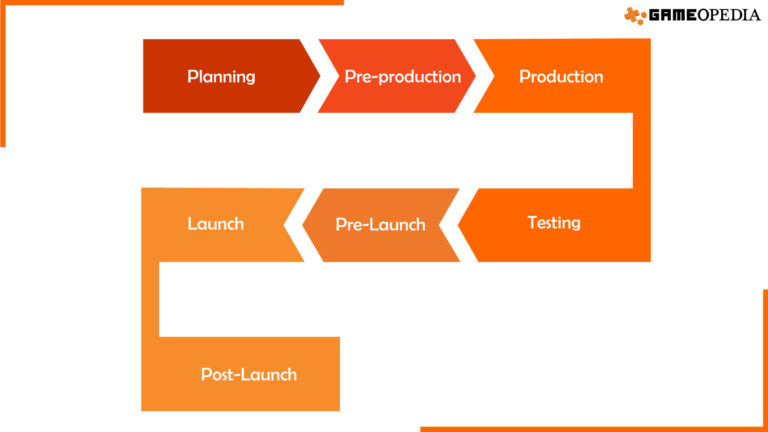
Planning
In this stage, you need to think about what kind of game to make, what features to include, your budget and resources you can allocate, and do some competitor analysis to see where you stand. Some questions to ask yourself here are:
What genre of game is wanted most in the market? You can look at genre trends over the last few years to gauge which genres are popular among game developers. Before you invest a great deal of money and labor into building your game, you should test out how interested a market or audience might be for a product you want to build. You can use platforms like Splitmetrics to let you test market interest and look at the acquisition funnel, as well as understand what costs you will face while marketing your game. By looking at Google Playstore (for mobile games) or Steam (for PC) you can figure out who the leaders in the market you’ve chosen are- your competition, so as to speak. For example, Oleg Yakubenkov, a mobile game data/product manager, researched the market to see which games thrive on organic traffic and how he could outperform them. He noticed that the racing and simulator niches were getting millions of downloads and there was still room for more. He helped build the Epic Split Truck Simulator which raked in over 2 million downloads in 2019.
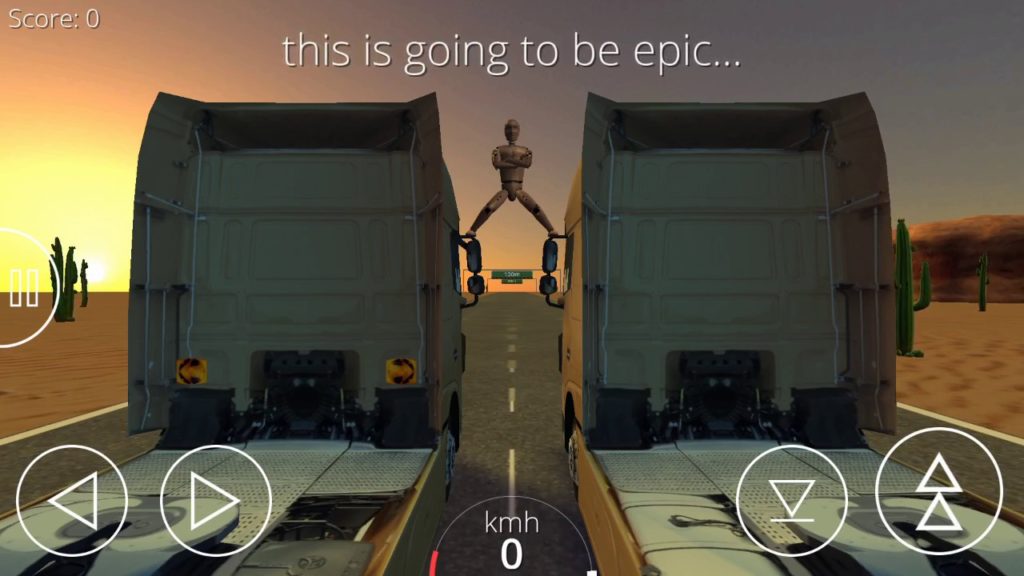
- What region do you want to focus on releasing your game? Are you going to make sure cultural nuances are tailored for this? If international, will there be different game editions? Data that can be helpful include how similarly themed or localised versions of games fare in a particular region.
- How can you monetize your game? Will it be F2P, one-time payment, or subscriptions? What about in-game items and other content? Look at data for the different revenue models and which works best for games like yours. For instance, F2P with in-game purchases works best for mobile games, but for AAA RPGs, it’s better to have a one-time payment.
- What platforms would you want to release my game on? Will it be compatible with consoles as they come out? Look at data for which platforms are good for the genre you’re planning to release your game in.
Pre-Production
In this stage of the game lifecycle, multiple departments consisting of writers, artists, designers, developers, engineers, project leads, and other crucial departments collaborate on the scope of the video game and see what each of them has to do. You can look at the past games you’ve made to get data about the kind of technology and writing you’re capable of and whether it’ll be sufficient for your current project. You can also do competitor analysis for the same. Sentiment analysis can also be a powerful tool here to look at what kind of games your audience likes, as well as understand what game to make, what features to include, and overall, ideate better.
- Is your development budget sufficient to bring your vision to life? Do you need to hire more people to help with development? You can look at similar projects as a benchmark for how many resources you might need.
- Do your developers and engineers have the resources necessary to render environments, figure out in-game mechanics, and game physics? Again, you can look at other projects to set a benchmark.
- Can my artists and designers create visuals and game art that aligns with what was planned in the previous stage? Does the team have enough talent to do so? You can look at previous games to see what kind of art they’re used to creating and if your new game is too far off those constraints.
- What is the timeline for this game’s development and release? Data can be of help here to model timelines for each stage of the game based on past releases.
Production
This is the stage where most of the time, resources, and effort of your team will be spent. You will be designing and rendering your characters and environment, code all of your in-game content into existence, and ensure your audio design is flawless. You will also make sure your levels and in-game milestones are immersive and fun to play. You will be constantly iterating and improving these things and following sprint schedules.
Data really doesn’t play as much of a role here as it does in other stages. You need to make sure that the different levels/phases of the game have been completed as per the game design document and that the different teams involved in the project are communicating with each other and working in sync.
Testing
This is one of the most important phases of game development and can make or break a game. You want to check every aspect of the game to make sure it plays as intended. Whether it is the accessibility of areas, testing of game mechanics, or even making sure the game is neither too easy nor difficult, game testing is the final place to catch game-breaking issues. When problems have been identified, the game goes back to the programmers or staff who help edit it again until the testers greenlight the game.
When it comes to testing, one of the main things you need to consider that uses data is how stable your game is. If there are buggy areas or levels, analyze which areas have the most bugs. You can create models to estimate issues based on past fixes and also to figure out time frames. You need to categorize these bugs into low-level, high-level, and critical ones and prioritize solving the latter. Also, test for audience engagement and game difficulty. Talk to your game testers who can give you data as to whether your game excites them, how many hours your testers have been playing it, and their impressions. If game testers love playing your game, it’s a great sign. If the testing sessions go past the allotted time, it is likely you have something engaging and fun, and therefore, more likely to succeed on your hands. In contrast to the above, if your game development team doesn’t really play your game despite being the ones who make it, there is probably something that isn’t right with it and needs looking into.
Pre-Launch
These are activities in the game lifecycle that help market, promote, and further test a game. It can involve adverts with gameplay footage, game screenshots, or opening up testing to the public. Some things which you need to consider are:
- Have you planned for an alpha/beta release? What do your alpha testers think about your game? There is a lot of gaming data you can gather from your testers here which include engagement data, game balancing data, information about bugs and exploits, and general feedback. You will want to build an analytics pipeline with this data to constantly drive improvement.
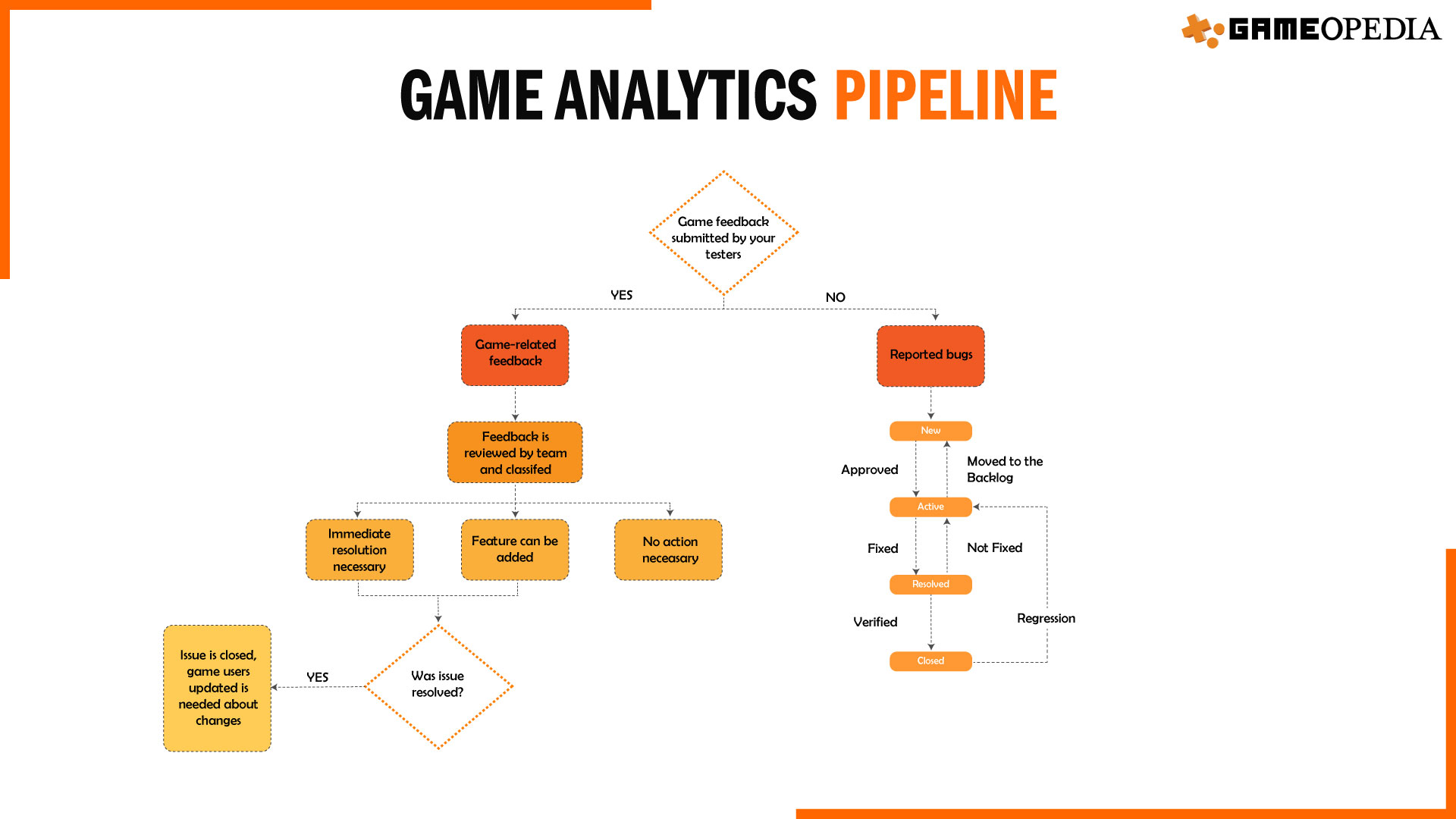
- DAU (daily active users), MAU (monthly active users), and CCU (concurrent users) are very important metrics that can tell you how many people enjoy playing your game. You want to keep an eye on these numbers and ask your testers their reasons if there are any abrupt decreases. Keep in mind that your beta testers are usually excited to try out something new that they have early access to. You can expect your final audience to have lower retention rates than your testers.
- In your pipeline, one of the major areas to look at is session duration and frequency. See how long and how often your testers play your game, and if they stop playing at any particular point. This can give important insights into which parts of your game might be boring or too complex for the average player.
- What’s your marketing budget and strategy? Where are you going to be focusing your resources? Look at past games released to see where you’ll be able to get the most bang for your buck, whether it’s showcases at gaming conferences or just advertising campaigns.
Launch
This is when your game is released to the world at large. Before you do so, you’ll spend the time leading up to your launch date crossing off bugs and fixes, as well as polishing up your game before sending it out into the market.
Again, this is one of those stages where you don’t have as much use for data, however, you can still use the analytics pipeline to optimize your game for multiple platforms/system configurations as well as polish it. You can also create better timelines and decide if a launch delay or overtime working is necessary for squashing the bugs which were found during extensive testing based on the time taken to fix the existing ones.
Post-Launch
In this last stage of the game lifecycle, your game is finally done and people are playing it. However, your work isn’t over yet. There might still be some bugs in your game, usually on certain operating systems or hardware configurations. As and when your players submit bug reports, your team can help fix them. Another major thing on your plate is providing game balance updates and patches- may be one antagonist is too hard to kill or one weapon is too overpowered. You’d want to balance these issues to ensure the game is playable. Finally, releasing new content has become standard practice as well in the form of DLCs, where you can increase the replay value of your game and keep it fresh for your audience. Some things you should consider:
- Look at your post-game release statistics like DAU, MAU, and CCU to see if your user base is stable or growing. If your churn rate is high, understand why by asking your users or seeing which level or segment of the game they leave.
- Revenue data is also important. Look at your CPI (cost per install), ARPU (average revenue per user), and ATV (average transaction value) to understand where you need to optimize your game and improve it to both increase revenue and provide a better user experience.
- Is your team resolving the issues which players are submitting in bug reports? Is the frequency of bugs increasing for some reason? Are you communicating the resolution of significant issues with your audience and keeping them updated?
- Are you keeping the game balanced and rolling out patches to improve the quality of play? Again, tools like sentiment analysis can be of huge help here as they let you track sentiments across the various individual aspects of a game like combat, mechanics, characters, and story.
- Is your team developing and releasing new content which is of a high standard and keeps the audience engaged? Focus on session duration and frequency to understand where your users might find the game too boring or hard, as well as how you can improve engagement.
Audiences love personalization. For example, CD Projekt Red, buoyed by the success of the in-game card game Gwent from the Witcher 3, released a standalone version. It’s still a success, and it’s not just because of frequent patches. They have a ton of customizations such as card backs, game boards, several detailed titles and player avatars which you can earn by playing, and lots more. Some of these you can buy but all of them make the game feel like it’s truly yours. They keep the game from going stale, but more than that, CD Projekt Red uses data to monitor the state of the game, be it in-game statistics or forums like Reddit. They see if any cards are overpowered or broken and are willing to hotfix these issues. Their patch notes are also extensive and mention why these changes have been made.

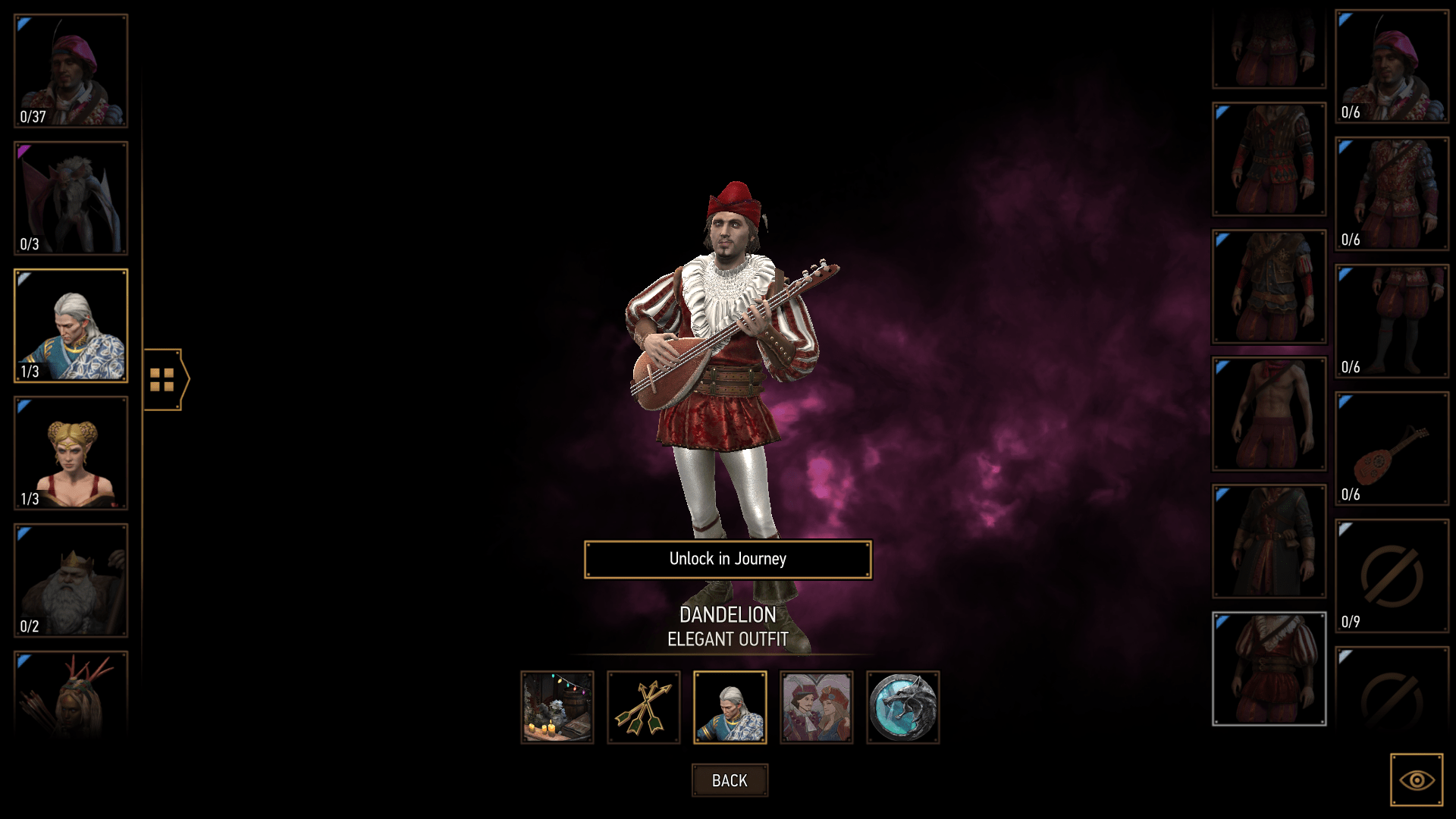
- Apart from in-game personalization, other gaming data such as play style, purchasing behaviors, and more, can be used to see what your audience enjoys in a game and you can build based on that. Post release changes to improve quality of life within the game can also prove important. Riot Games does a fantastic job with this which can be seen in their blogs and patch notes for Valorant. They point out issues they’ve noticed, the fix they’re providing or mention they’re working on solutions, and other things that are coming up in the game. This sort of update for your audience not only keeps them in the loop but also makes them feel valued.
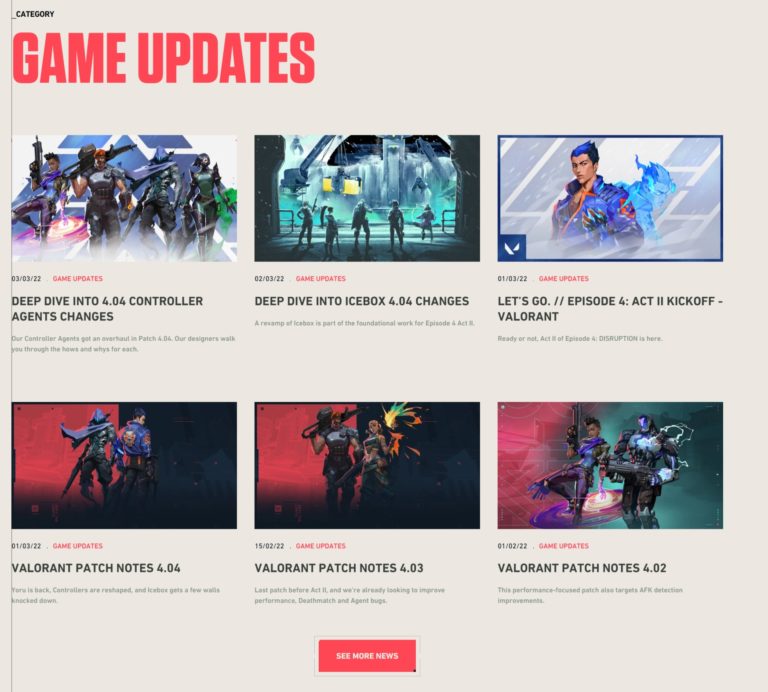
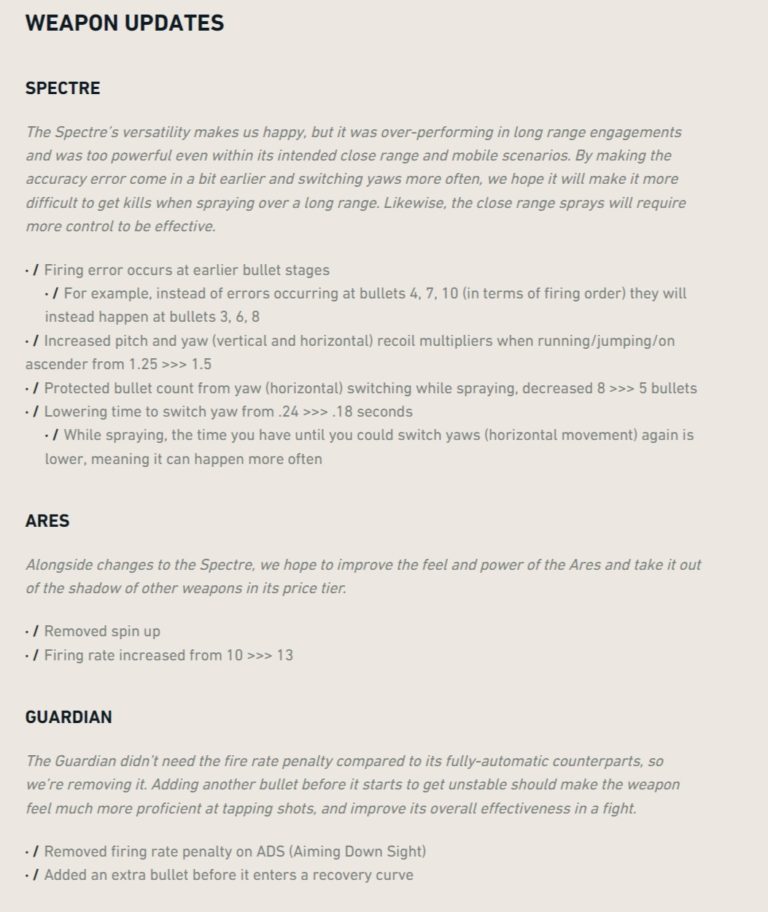
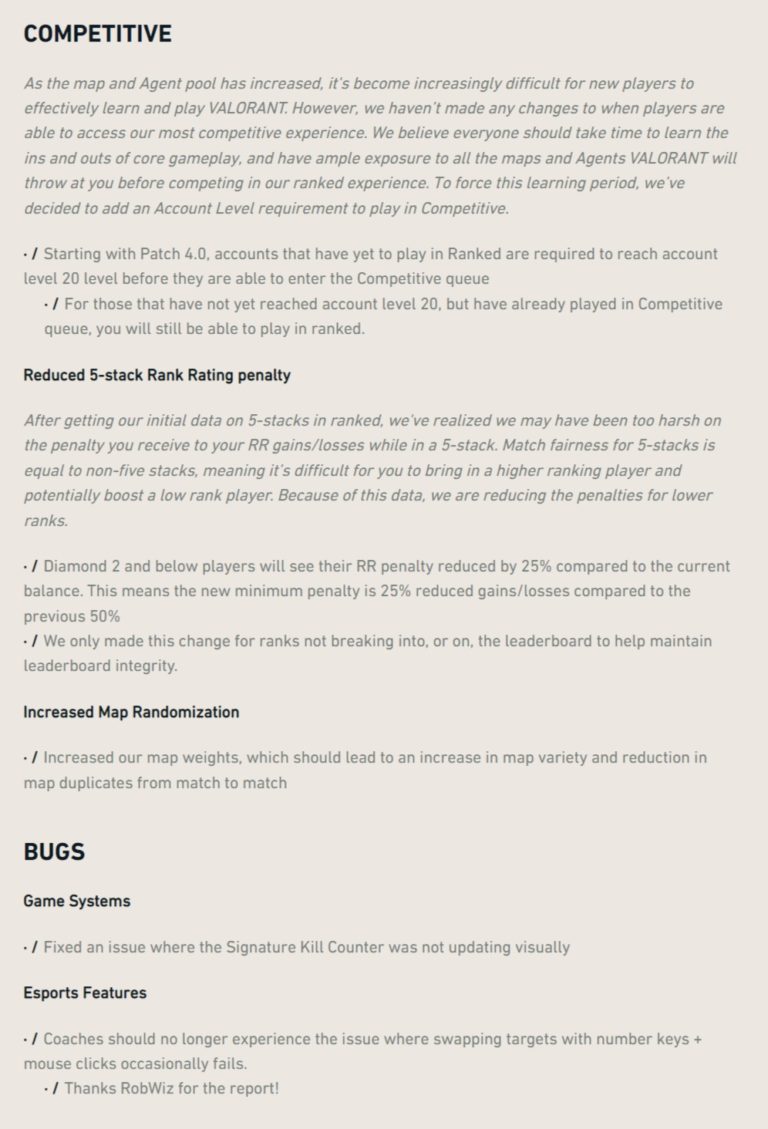
Data can help you answer these questions and keep track of your game’s quality across its lifecycle.
The Role of Data in the Future of Game Development
A lot of applications of data for game development which we pointed out above are very much in use these days. With the gaming industry becoming the world’s dominant form of entertainment, there’s a question of what the future gaming experience will look like. However, with increased gaming data capture and leveraging it at every aspect of the game’s lifecycle, the question is what will the future of data in game development be like. That lies in a few key fields which have been gaining traction. Predictive analytics is one of these- it can help you anticipate actions that players will take, and help you stay ahead of your competitors. The goal of predictive analytics in the gaming industry is to create statistical models that ingest both historical and current data to calculate scores, risks, and predictions based on an outcome. For instance, predictive models can help gaming companies influence in-game purchases, prevent churn, and optimize lifetime value. The use cases for predictive analytics in gaming are pretty diverse. These include:
- Game development – identify optimization points for product and marketing teams to make optimizations
- Monetization – make predictions on behavior that lead up to purchases (i.e. freemium to paid subscriptions)
- Game design – use algorithms to determine the best ways to keep players engaged
- Game experience – help determine visual effects and graphics that are most likely to resonate with players
- Personalized marketing – determine the messaging that will best resonate with individual players
- Fraud detection – validate that players are who they say they are and avoid problematic behaviors before they have a chance to happen
Apart from predictive analytics, artificial intelligence (AI) is helping the video game industry level up. It saves time and money for developers by automating time-consuming tasks and speeding them up. For example, extensive QA testing is needed to make sure your game doesn’t have glitches or bugs but this sort of testing can be extremely time-consuming. However, AI can help you get over that hurdle. A fantastic example of this is Larian Studio’s proprietary AI World Tester. When a new build for a game is put together, the World Tester pushes the game’s boundaries, going through combat, dialogue options, and menus in search of bugs faster than any human QA team could ever hope to do. The World Tester can even juggle multiple builds at the same time, simulating hours of gameplay at once.
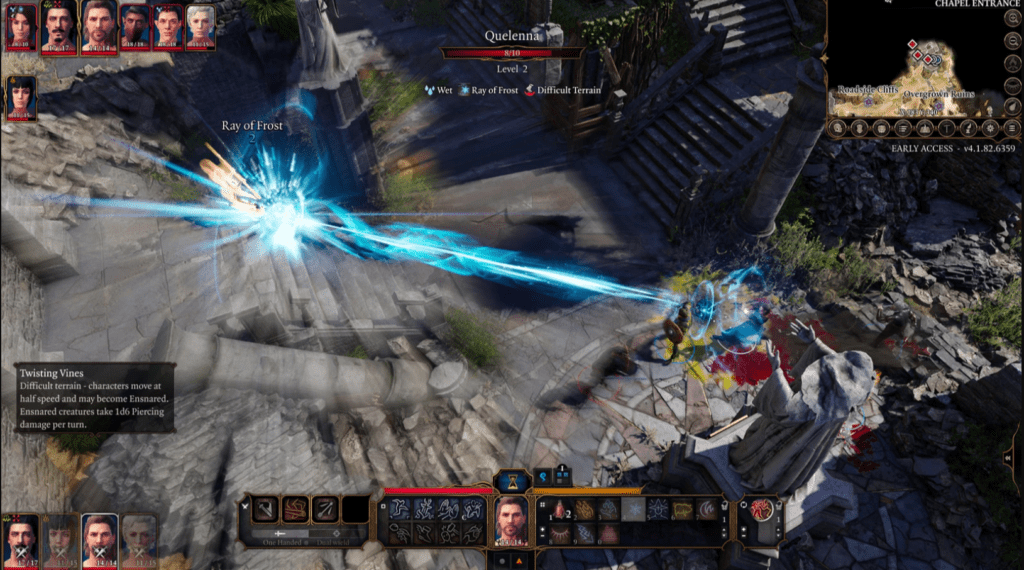
AI can also help with automating graphics, player verification, and even making games without needing to know code. Another key application is monitoring toxicity in online games. AI has helped Blizzard find abusive behavior and punish it by verifying player reports. By continually looking for patterns in player reports, the machine learning algorithm gets better at identifying offensive communications. Companies like Riot Games have also begun leveraging machine learning and other advanced technologies to parse massive volumes of chats, understand the unique semantics of gamer slang and acronyms, and craft automated yet contextually appropriate responses to abusers.
The decisions that you make for your gaming analytics strategy today will create the foundation for your company’s future in the gaming industry. We’ve already started using video game data for building games and selling them effectively. However, as you can see above, it could be so much more.
Gameopedia’s video game data helps publishers and game makers to understand, market, and help make better games. Whether it’s understanding trends in games via our game taxonomy or using sentiment analysis to understand your audience at a feature level, reach out to us to get access to game data that can empower you to make the best data-driven decisions.

